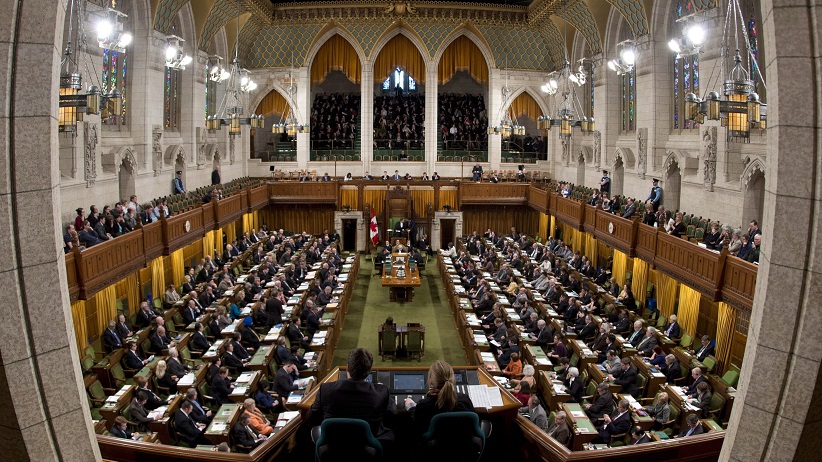Canada’s transport watchdog has its eyes on the skies. Who’s listening?
Your daily dose of political theatre
Share

The final seconds of Air Canada’s Flight ACA264 sound harrowing. The Transportation Safety Board’s interim recounting of the Airbus A320’s crash landing only a few minutes past midnight on March 29 explains that the aircraft hit a localizer antenna array—something like this—more than 300 m from the runway, became airborne again, and then came to a rest another 300 m down the runway. So many details remain murky as the TSB digs into its investigation, but the agency’s initial report reveals that the crash displayed “some of the characteristics of an approach-and-landing accident which is on TSB’s Watchlist.”
That bit about the watchlist caught the attention of NDP MP Hoang Mai, the official opposition’s transport critic. He followed the TSB’s hyperlinks and found that, indeed, the agency has waved its hands in the air about unsafe landings for upwards of five years. Mai accused the government, like any opposition MP worth his rhetorical salt, of “dragging its feet” on establishing stricter safety regulations that ensure safer landings.
From the watchlist’s entry on approach-and-landing accidents, we find those recommendations:
The Transportation Safety Board of Canada (TSB) has investigated a number of landing accidents that have highlighted the need for runway end safety areas, and improved runway surface condition reporting. In Canada, from 2009 to 2013, Canadian-registered aircraft were involved in an average of 150 approach-and-landing accidents every year, of which 6% were runway overrun accidents.
The TSB acknowledges that some Canadian airports have worked to improve runway conditions.
There has been some progress since this issue was included on the Watchlist in 2010. Some airports have improved runway surfaces and safety areas. NAV CANADA has taken measures to improve runway surface condition reporting for pilots, and now provides guidance for stabilized descents in its approach procedures. Transport Canada (TC) is conducting a risk-based analysis to revise its runway safety area standards. However, the number of landing accidents and runway overruns has not decreased, so until TC completes its risk analysis and revises its standards, the risk to the public remains.
Helpfully, the transport watchdog documents its interactions with Transport Canada, and the updates sound like the technical equivalent of an only intermittently updated diary. At issue is the TSB’s recommendation that the department bolster its regulations for runway end safety areas, or RESAs. The department has so far not implemented that recommendation, and a long-promised risk assessment that could lead to those changes is apparently ongoing.
Air Canada’s most recent incident and Mai’s intervention in QP both reveal that Canada’s justified preoccupation with rail safety in the wake of the Lac-Mégantic disaster sometimes overshadows the real risks to other travel, including your everyday commercial flight. Mai admitted to Maclean’s that, yeah, the disturbing number of derailments on Canada’s railways has taken up a lot of his time in the House. But the TSB’s watchlist keeps an eye on the sky, too, and one hopes it doesn’t take a disaster for someone to pay attention to the agency’s waving hands.
The context
Chances are that most Easter dinner conversations won’t fuss themselves with Canada’s military bombardment of Islamic State. Even those who do debate the merits of war will probably stick to the broad strokes: why a bombing campaign is or is not justified, say, or whether or not it’s helpful as the world fights back against the supposed caliphate in Iraq and Syria. Most people won’t quibble about the kinds of weapons that technicians attach to CF-18 hornets.
That’s why Defence Minister Jason Kenney can get away with fouling up seemingly straightforward facts about a U.S.-led coalition’s weapons of choice in Syria. Kenney repeated several times last week that, until Canadians commence their own bombing runs, the United States is the only country deploying precision-guided munitions in Syria. That makes Canada an incredibly valuable partner in the Syrian frontier, went Kenney’s argument.
The Ottawa Citizen‘s David Pugliese knew better, and reported that “both Saudi Arabia and the United Arab Emirates, part of the current five country U.S.-led coalition bombing targets in Syria, have precision guided weapons and have already used them against Islamic extremists.” The weapons aren’t a secret, Pugliese wrote. “The Saudis bought their bombs in 2008 as part of a $20-billion arms deal with the U.S. In addition to its stocks of U.S. smart bombs, the UAE also spent $500 million in 2013 to buy South African-made precision-guided munitions for its fighter jets.”
When Gen. Tom Lawson, Canada’s Chief of the Defence Staff, published an online response to the story, he delicately backed up much of what Kenney claimed about Canada’s advanced weaponry—but, as Pugliese explained in his own follow-up, Lawson never denied that other coalition partners deploy precision-guided munitions.
A tiny subset of the wider Canadian public will care about the lack of veracity to Kenney’s claims a few days ago. But it was only a few weeks ago that the defence minister, in an attempt to celebrate International Women’s Day and pay tribute to the military fight against the repressive Islamic State, tweeted photos of women in chains that he thought portrayed oppressed women in the Muslim world—but were actually stills from a symbolic procession and totally unrelated to any modern oppression.
Kenney is a hard-working minister who’s known to fix his government’s problems. These gaffes don’t reflect his reputation, and probably they’re not damaging enough on their own to knock that reputation off its hinges. But Kenney’s opponents will take anything they can get as Canada figures out its role in Syria and gets used to a protracted fight in the Middle East.